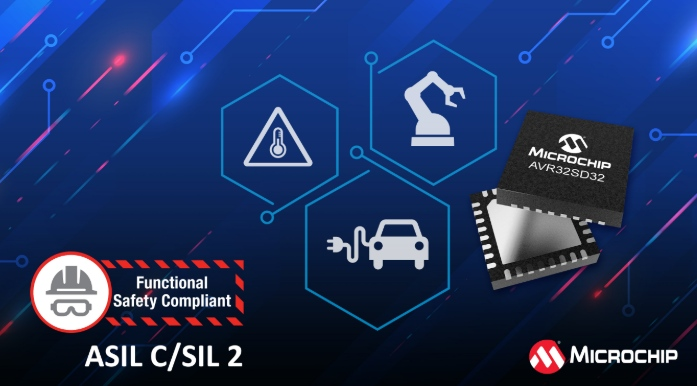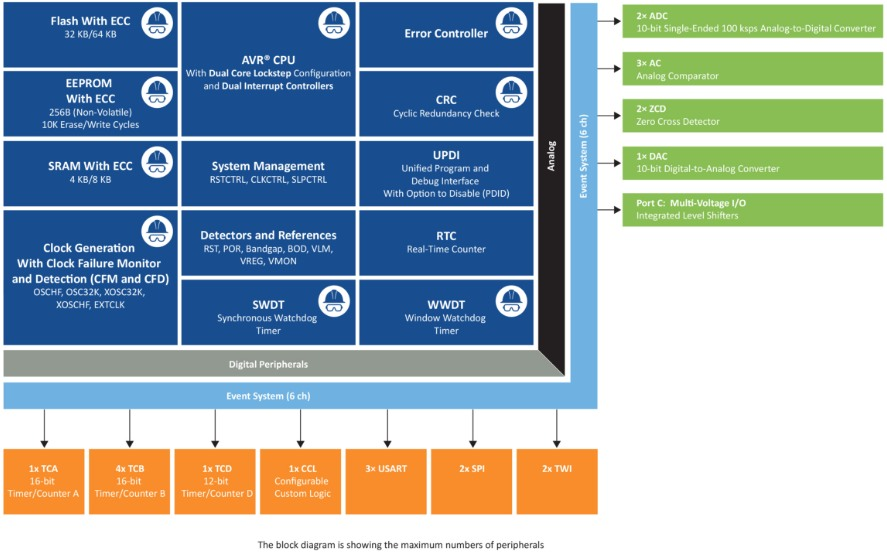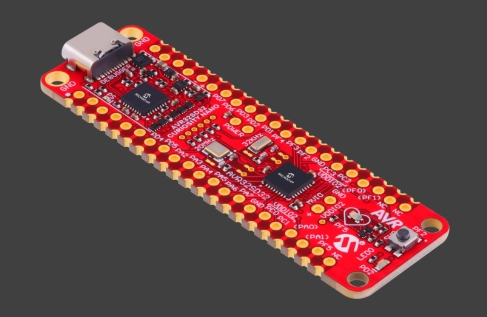Entry-Level Microcontrollers (MCUs) from Microchip's AVR® SD Series Lower System Cost and Complexity for Safety-Critical Applications
2025-03-25 10:01:38 797
The AVR® SD series of microcontrollers (MCUs) has been formally introduced by Microchip Technology Inc. to assist engineers in reducing design complexity and expense in safety-critical applications. This series of MCUs is the first entry-level MCU to meet Automotive Safety Integrity Level C (ASIL C) and Safety Integrity Level 2 (SIL 2) requirements at this price point. It incorporates a built-in functional safety mechanism, is intended for applications requiring high reliability verification, and costs less than $1. TÜV Rheinland has approved the series' functional safety management system, which improves safety performance even more.

Figure. 1
A dual-core, lock-step CPU, dual-digit digital-to-analog converters (ADCs), full-memory error correction code (ECC), a dedicated error control module, an error injection mechanism, voltage and clock monitors, and other hardware safety features are all included in the AVR SD series microcontrollers. By achieving fault detection time intervals (FDTIs) as low as 1 millisecond, these features significantly reduce software complexity and fault detection time, eliminating dangerous situations and enhancing system reliability.

Figure. 2
This family of microcontrollers detects and handles faults, initiates safety states as required, and automatically manages functional safety diagnostics when used with Microchip's Safety Framework software. With low power consumption, this family of microcontrollers can serve as a primary processor to carry out crucial tasks like identifying thermal runaway or tracking sensor data like rotational position. In complex systems, it is also a great option for co-processing, mirroring or offloading safety-critical tasks for applications requiring high degrees of safety integrity, up to ASIL D and SIL 3.

Figure. 3
Greg Robinson, corporate vice president for Microchip's microcontroller (MCU) business line, stated that engineers are frequently restricted to costly and intricate devices when creating safety-critical applications. We are assisting our clients in more effectively meeting strict safety requirements by directly incorporating particular safety features into entry-level MCUs and offering a corresponding software framework. Designers may drastically cut down on system and certification expenses as well as development time using the AVR SD Series.
For a variety of uses in aerospace and defense, industrial automation, automotive, and medical applications—particularly flight control systems, ignition control, robotic safety functions, advanced driver assistance systems (ADAS), and medical infusion pumps—the AVR SD family of microcontrollers complies with international safety standards ISO 26262 (automotive) and IEC 61508 (industrial). To find out more about Microchip's complete range of AVR® MCUs and useful safety devices, visit their website.
Tools for Development
With the help of a functional safety software package that consists of safety documentation (failure modes, impact and diagnostic analysis reports, safety manuals, dependent failure analysis reports), safety software, and compliance reports, developers can build on the Microchip Curiosity Nano development board and the TÜV SÜD-certified MPLAB® XC8 Pro compiler.




